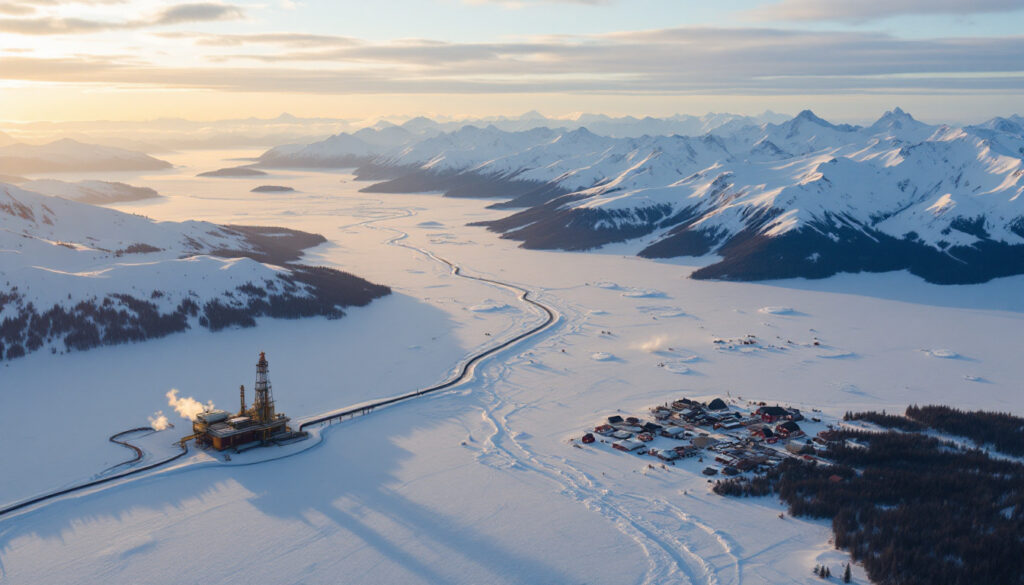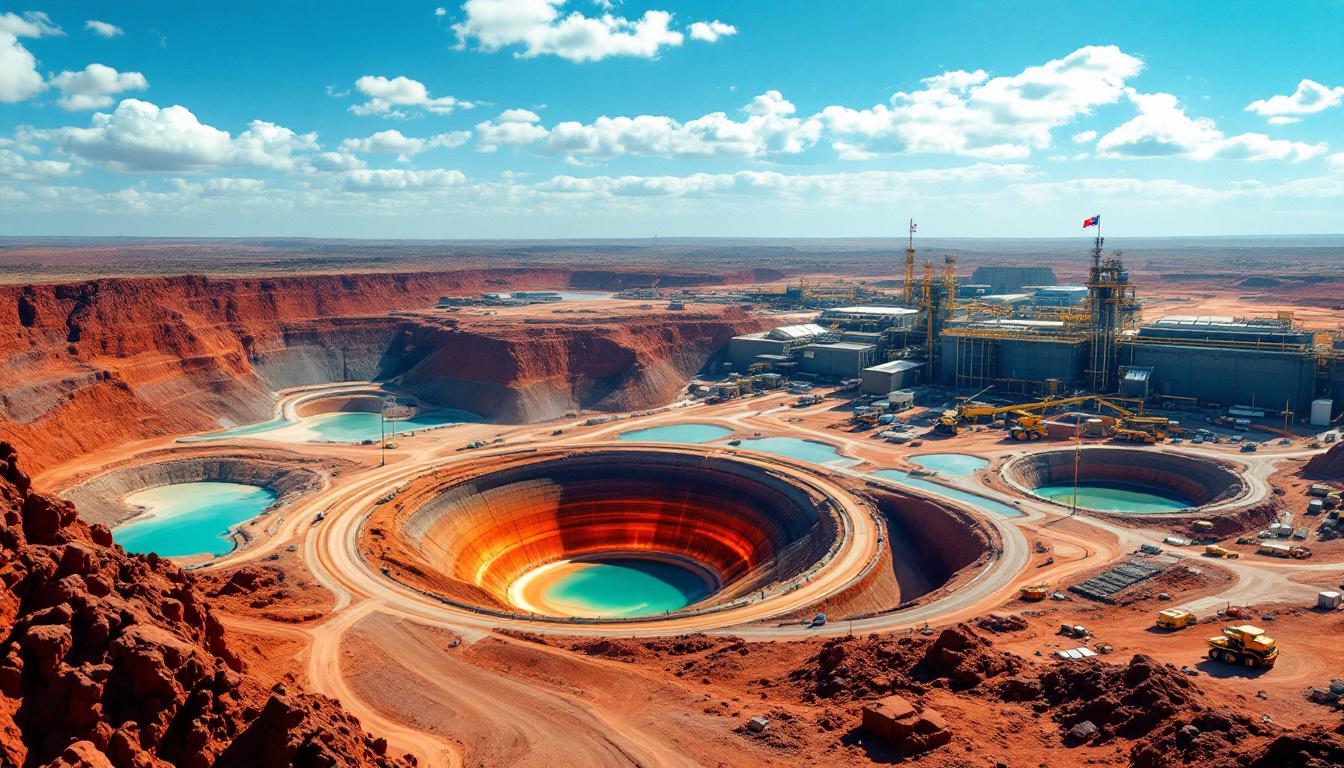What Areas Will Be Opened for Oil and Gas Drilling in Alaska?
Recent announcements from the Interior Department have rekindled interest in energy exploration in Alaska. The decision, made as part of the ongoing strategy linked to the Trump administration to open more Alaska acres for oil and gas drilling, is already fuelling debates about future economic and environmental impacts. In addition, it reflects a notable shift in federal policy.
Interior Secretary Doug Burgum revealed that vast areas of Alaska’s National Petroleum Reserve (NPR-A) will be reopened. Approximately 82% of this reserve may now be available for drilling. This move comes as a sharp reversal compared to earlier restrictions. For instance, some market analysts have highlighted trump administration's energy policy reversal as a key turning point.
Furthermore, another important area now included is the 1.56-million-acre Coastal Plain of the Arctic National Wildlife Refuge (ANWR). This land is both majestic and resource-rich. In addition, it has been at the heart of debates between conservationists and developers. Consequently, stakeholders are now weighing potential economic gains against environmental costs.
The plan also revokes restrictions along the Trans-Alaska Pipeline Corridor and the Dalton Highway. These corridors serve as lifelines that facilitate the movement of equipment and personnel. Moreover, they underpin critical energy infrastructure. In this way, the reopening supports the broader strategy of the Trump administration to open more Alaska acres for oil and gas drilling.
How Does This Policy Reverse Biden Administration Restrictions?
This new approach marks a complete about-face from the policies practised by the Biden administration. Under Biden, large areas of Alaska were protected to address climate change and preserve sensitive ecosystems. However, the current policy clearly contrasts with those earlier measures.
For instance, during the previous administration, a lease auction for drilling rights in ANWR received no bids. This indicated a climate of uncertainty and regulatory hesitancy among oil companies. In addition, internal debates were captured in discussions on guide to understanding drilling results. Consequently, investment in Alaska’s resources remains a highly polarised issue.
In contrast, the new policy is designed to create stability for investors. Moreover, by rescinding earlier conservation measures, the government is signalling robust support for resource development. As a result, the strategy echoes the long-standing sentiment behind the Trump administration to open more Alaska acres for oil and gas drilling.
What Infrastructure Projects Will Move Forward Under This Plan?
One of the most ambitious projects now set to benefit is the 211-mile Ambler Road Project. This project would connect the Dalton Highway to the Ambler Mining District. In addition, it is anticipated to unlock access to valuable deposits such as copper, zinc, lead, gold, and silver.
Additionally, the Alaska Liquefied Natural Gas (LNG) Pipeline project is gaining traction. The $38.7 billion pipeline is designed to transport natural gas from the North Slope to a liquefaction facility in southcentral Alaska. Consequently, this project could see LNG exports reaching 20 million metric tons annually, particularly to Asian markets.
Moreover, federal lands will be transferred to the State of Alaska. This land conveyance is expected to expedite resource management. In addition, state permitting processes are typically faster and more flexible than their federal counterparts. For further insights on market momentum, consult the industry predictions for future resource development.
Collectively, these infrastructure projects represent potential investments exceeding £50 billion. Furthermore, they could create thousands of jobs across the state. Consequently, both local communities and large-scale investors are watching developments closely.
Why Is Drilling in Alaska So Controversial?
The debate surrounding drilling in Alaska has always been polarised between economic development and environmental conservation. The reopening of areas such as the ANWR Coastal Plain has reignited these contentious discussions. In addition, environmentalists warn about the impact on pristine wilderness areas.
For instance, the Coastal Plain is the calving ground of the Porcupine Caribou herd. This herd undertakes one of the world’s longest migrations, travelling over 1,500 miles annually. Furthermore, the area provides essential denning habitat for polar bears. In this context, critics argue that this decision could heavily impact fragile ecosystems. You may read more about these discussions on debates over the clean energy transition.
Indigenous communities also hold varying perspectives. Some support development for economic growth, while others remain opposed due to environmental and cultural concerns. For instance, leaders from the Gwich'in communities are particularly cautious. In addition, they stress that disruption to the caribou migration could have long-lasting cultural impacts.
What Are the Economic and Environmental Impacts?
Economically, Alaska stands to benefit substantially from increased oil and gas development. The state has long relied on oil revenues to fund public services. Consequently, the reactivation of drilling areas could provide up to £2.1 billion in annual revenue. Moreover, this initiative is anticipated to create around 7,500 direct jobs.
For local communities with limited economic opportunities, the benefits include improved infrastructure and boosted local services. In addition, resource development could drive further investments in education and health. The transition is also viewed in the broader context of the Trump administration to open more Alaska acres for oil and gas drilling, which is critical for regional revenue diversification.
However, environmental risks are a major concern. Industrial expansion in fragile ecosystems raises issues such as habitat loss and increased carbon emissions. Environmental groups have warned that new drilling projects may accelerate climate change impacts at a time when global efforts to reduce fossil fuel use are intensifying.
Market uncertainty further complicates the picture. For example, several major banks have introduced policies that limit financing for Arctic drilling projects. In addition, investor caution persists due to the volatility of energy markets. For additional perspectives, readers can explore global commodities market insights.
What Does the Future Hold for Alaska's Energy Development?
The future of Alaska’s energy sector is filled with both promise and uncertainty. Administrative processes to formalise the changes are expected to begin immediately. Furthermore, revisions to land management plans and environmental reviews will be undertaken promptly. This approach reaffirms the strategy underpinning the Trump administration to open more Alaska acres for oil and gas drilling.
Legal challenges are almost inevitable. Environmental groups have a history of delaying such projects through litigation. Additionally, previous legal battles over the ANWR were protracted, suggesting similar obstacles may arise in the future. In response, industry experts advise that potential delays could extend the development timeline by several years.
Industry responses vary widely among stakeholders. Independent operators appear keen to invest, whereas major international oil companies remain cautious. Furthermore, heightened regulatory scrutiny and increasing global pressure for sustainable practices may deter immediate large-scale investments.
Several external sources provide further details on the evolving policy landscape. For example, an article in The Washington Post offers analysis on the repercussions of the new drilling policies. You can review these discussions by visiting trump drilling policy details. In addition, information published by the White House outlines strategic resource approaches, available at alaskan resource strategy.
FAQs About Oil and Gas Drilling in Alaska
1. What specific areas are being opened for drilling?
The plan opens 82% of the 23-million-acre National Petroleum Reserve-Alaska, 1.56 million acres of ANWR’s Coastal Plain, and removes limitations along key transport corridors.
2. How does this policy differ from previous administrations?
This policy is a complete reversal from the Biden administration's approach, emphasising resource development over conservation. Notably, it mirrors earlier strategies such as the Trump administration to open more Alaska acres for oil and gas drilling.
3. What are the environmental concerns about drilling in the Arctic?
Key concerns include the disruption of migratory patterns for the Porcupine Caribou herd, the loss of polar bear denning habitats, and broader ecosystem disturbances. Moreover, critics assert that increased drilling risks accelerating climate change.
4. How do Alaska’s indigenous communities view these developments?
There is a divide among indigenous groups. While some see potential economic benefits, others strongly oppose drilling due to the risk of disrupting cultural practices and subsistence activities.
5. What economic benefits are expected from these projects?
Proponents estimate that new resource development could generate up to £2.1 billion annually. Furthermore, the projects have the potential to create thousands of jobs and diversify local economies, supporting the broader vision of the Trump administration to open more Alaska acres for oil and gas drilling.
In summary, the sweeping policy changes not only hold the promise of substantial economic returns but also raise significant environmental and legal questions. Stakeholders across the board are watching the implementation of these reforms with great interest. With the Trump administration to open more Alaska acres for oil and gas drilling now clearly on the agenda, the balance between energy demand and environmental stewardship will continue to be hotly debated.
As the debate continues, it remains essential to monitor the interplay of policy, market forces, and environmental obligations in shaping the future of Alaska’s energy landscape. This evolving story invites further analysis and sustained attention from all interested parties.
Interested in tracking market impacts of Alaska's energy policy shifts?
Stay ahead with real-time alerts on how these policy changes affect ASX-listed companies through Discovery Alert's proprietary Discovery IQ model. Explore our dedicated discoveries page to understand how major resource developments create significant market opportunities.




